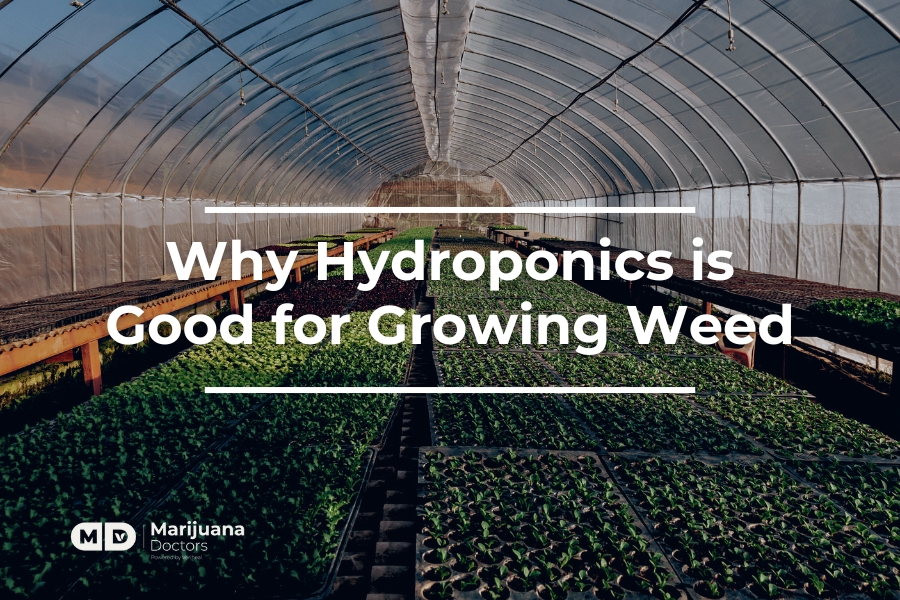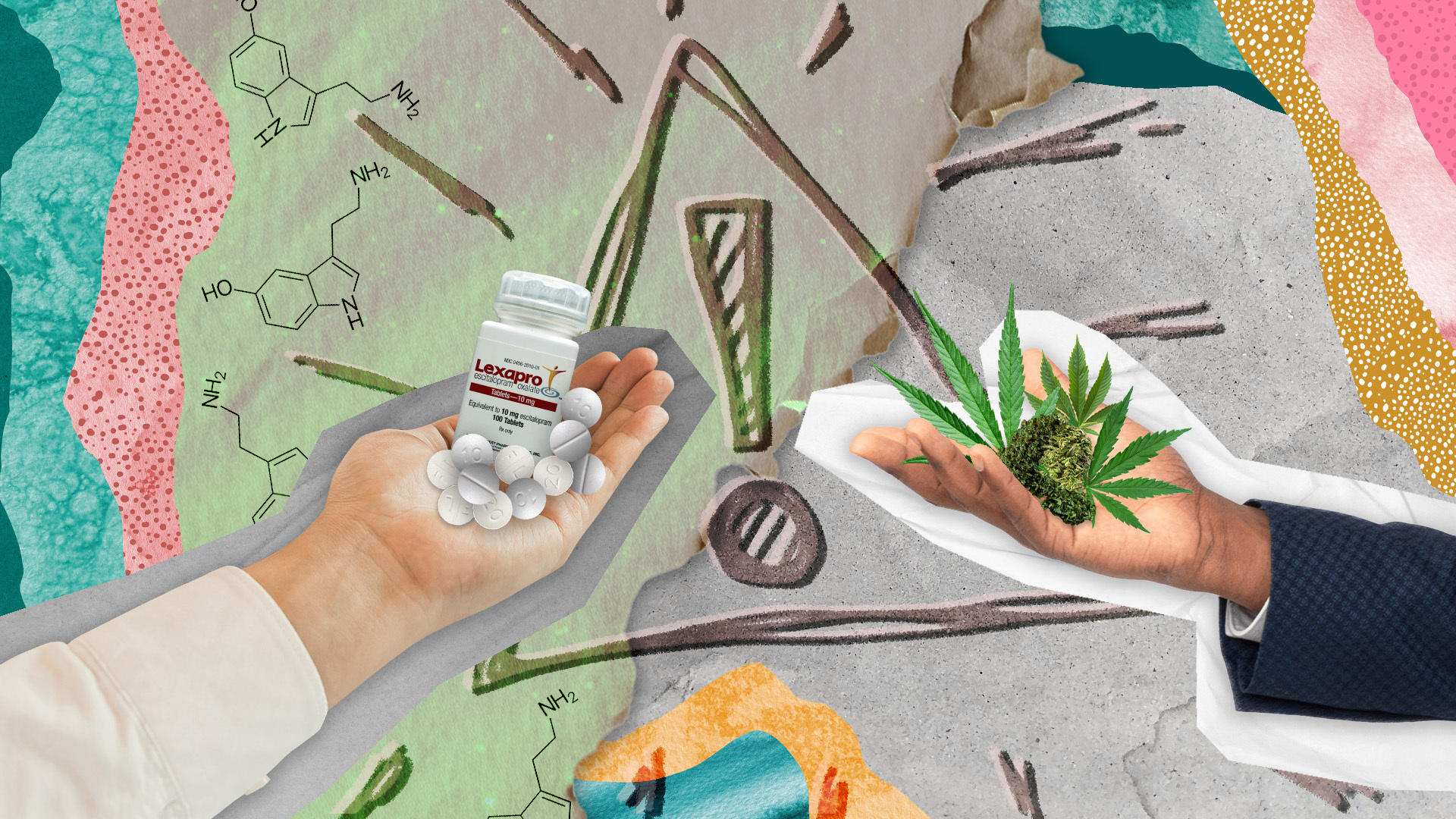Hydroponics, simply put, is a method of cultivation that does not utilize soil and instead utilizes a nutrient-rich water solution. Cannabis is often grown utilizing this technique, which has many advantages over traditional soil cultivation. You may have heard it called “hydroweed,” “hydro,” or simply “dro.” In this article, we are going to explore what hydroponics is, how it works, and why it is a great option for growing cannabis.
What Is Hydroponics?
The general term for the cultivation of plants in water is hydroponics. Whether designed to grow cannabis or tomatoes, Hydroponic systems utilize water that is enriched with dissolved nutrients needed for plants to thrive. The plants grow suspended in water or with the support of a medium such as clay pebbles, rock wool, or perlite. Hydroponic systems also require oxygen to be aerated into the water in order to prevent it from becoming stagnant. To maintain optimal conditions, those growing utilizing hydroponic systems monitor the pH and electrical conductivity of the water often and adjust aspects as needed.
How Does Hydroponics Work?
The basis for how hydroponics works is that nutrients are provided directly to the roots of plants to avoid the interference and potential risks of things such as pests that come with growing in soil. Without this interference, plants tend to grow larger, faster, and, in many cases, healthier than with soil-grown plants. There are also many other benefits of growing with hydroponic systems, such as the ones we discuss below. These include but are not limited to the following.
- Saves Space
- Saves Water
- Saves Labor Time and Costs
- Eliminates the Need for Tilling, Weeding, and Watering
- Can be Done Indoor or Outdoors
- Effective Growing Option for Any Climate or Season with Proper Light and Ventilation
Why Is Hydroponics Good for Growing Weed?
You may be asking yourself, though, “Hasn’t cannabis grown great in soil for centuries?” And yes, it absolutely has, but on a commercial scale and even a personal scale, hydroponics can offer many benefits. For commercial growers, hydroponics is a wonderful option simply because it allows you to have better control over your quality and quantity. Check out some of the reasons hydroponics is a great option for growing cannabis below!
- When growing hydroponically, it is estimated that cannabis can produce up to 20% more buds than the same genetics grown in soil. This is thought to be due to the plant being able to focus its energy on flowering and not on developing a strong root system, allowing for a more robust yield!
- It is thought by many that you can drastically improve the potency of your cannabis when growing hydroponically simply by avoiding stress from pests and diseases that often come with soil-grown plants. By avoiding soil, your plants are also able to absorb more nutrients that would otherwise be lost within the soil environment.
- Another benefit to avoiding common pests and other aspects that come with growing in soil, hydroponic weed can also tend to have enhanced flavor and aroma as they produce more terpenes and can express their genetic potential without being affected by soil quality or contaminants.
Common Hydroponic Growing Systems
When it comes to hydroponic cultivation, just like with growing in soil, there are many techniques and systems that are widely utilized. Let’s explore some of the common growing systems used to grow hydro.
Ebb and Flow System
The ebb and flow hydroponics system is likely one of the most popular and is sometimes referred to as a flood and drain system. These names are quite fitting considering that this hydroponic system is characterized by the plants being flooded by water with water and nutrient solution before the water is then once again removed. Within the ebb and flow system, plants are placed along a tray in pots within an inert growing medium, which is simply things such as perlite, rockwool, or clay pebbles. This tray is then flooded with water and nutrients, which then drains into a connected reservoir at either end of the tray. Some advantages to this system are that it provides the plant with all the goodness it needs, such as ample water, oxygen, and nutrients, but also prevents salt buildup, root rot, and more.
Drip System
Similar to ebb and flow, drip systems are hydroponic systems that deliver nutrient solution to plants individually through a drip emitter in a similar setup to the ebb and flow. The excess solution is either collected and recycled or it is simply allowed to drain away. While this system allows cultivators to have more control over their frequency of feeding and how much each plant is being fed it also requires more monitoring and maintenance.
Nutrient Film Technique (NFT) System
Last but not least the nutrient film technique (NFT) system. This hydroponic system involves a continuous flow of nutrient solution over the roots of plants, which are commonly placed in net pots or slabs of rockwool, which are then suspended over a shallow channel or tube. This allows the nutrient solution to flow through at a low rate, which results in a thin film of water that covers the roots. The solution then returns to the reservoir and is recirculated. This hydroponic cultivation system provides the plants with constant access to water, nutrients, and oxygen while also saving water and space. However, it also has some drawbacks, such as the risk of power failure, pump failure, or blockage, which could quickly dry out or drown the roots.
As you can see, each system has its ups and downs, so it is advised that growers choose the one that best suits their needs, preferences, and budget.
How To Start Hydroponic Growing Cannabis?
Hydroponic growing for cannabis is not as complicated as it may seem. To get started, you will need some basic equipment, such as:
- A hydroponic system: You can buy a ready-made system or build your own from scratch.
- A grow light.
- A timer to control the light cycle.
- A dedicated space for your plants where you can control the temperature, humidity, and airflow.
- A fan.
- A nutrient solution: This is a premixed nutrient solution that contains all the essential elements for cannabis growth, such as nitrogen, phosphorus, potassium, calcium, magnesium, iron, etc.
- A pH meter and an EC meter to measure and adjust the pH and electrical conductivity of the water.
- Plants! This can be cannabis seeds or clones, whichever you prefer.
- Once you have everything set up, here are a few simple steps to help you start growing hydroweed.
- Germinate your seeds or root your clones in a moist medium such as rockwool cubes or peat pellets.
- Transplant your seedlings or clones into your hydroponic system once they’ve developed roots.
- Adjust the water level, nutrient concentration, pH level, and EC level according to the stage of growth of your plants.
- Set the light cycle to 18 hours on and 6 hours off for the vegetative stage and 12 hours on and 12 hours off for the flowering stage.
- Prune and train your plants to optimize their growth and yield.
- Harvest your buds when they are ripe and ready.
Conclusion
Hydroponic weed is an innovative and rewarding way of growing cannabis that offers many benefits over soil cultivation. By using hydroponics, you can grow faster, bigger, stronger, and tastier buds with less hassle and risks for pests and contaminants.






